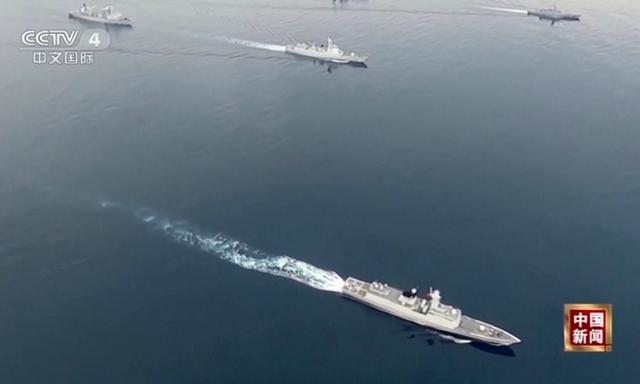


A Coast Guard crew member observes a vessel in the Bering Sea on Sept. 19, 2022. (US Coast Guard)
Last week, a joint naval operation between China and Russia raised concerns as it approached the coast of Alaska.
The operation involved an impressive fleet of warships, which has been described as the largest combined Russian-Chinese battle group ever to approach U.S. shores.
Sen. Dan Sullivan (R-Alaska) expressed his apprehension about the situation, stating, “This is yet another reminder that we have entered a new era of authoritarian aggression led by the dictators of Beijing and Moscow.”
As a member of the Senate Armed Services Committee, Mr. Sullivan revealed that the U.S. Navy dispatched four destroyers to escort the Chinese and Russian warships away from U.S. coastal waters.
Interestingly, this is not the first time such an operation has occurred in the region.
Last summer, a smaller-scale operation took place off the coast of Alaska.
Reflecting on the previous response, Mr. Sullivan voiced his expectations for a more robust reaction if another similar drill were to occur.
He expressed satisfaction with the U.S. military’s response this time, stating that it sent a “strong message” to China and Russia about the United States’ commitment to protecting its vital national interests in Alaska.
However, specific details about the joint operation remain limited, with the U.S. Northern Command yet to provide confirmation and further information to the media.
Brent Sadler, a senior research fellow at the Heritage Foundation and a retired Navy captain, referred to the recent joint operation as “the largest combined Russian-Chinese battle group to approach American shores ever.”
In an interview on Fox News, Mr. Sullivan echoed this sentiment, emphasizing the unprecedented size and scope of the naval task force cooperation between Russia and China.
According to him, the presence of such a significant surface action task force near U.S. shores raises legitimate concerns for both Alaskans and residents of the East Coast.
It indicates that China and Russia are becoming increasingly aggressive in their posture toward the United States.
Mr. Sullivan’s statement referred to a previous incident in September 2022, where a Chinese missile cruiser and two other Chinese navy ships joined forces with four Russian naval vessels in the region.
At that time, the U.S. response was deemed weak, with only a single Coast Guard cutter being dispatched.
The 17th Coast Guard District commander, Rear Adm. Nathan Moore, asserted that the Chinese-Russian formation adhered to international rules and norms during that incident.
He also stressed the importance of the U.S. naval forces’ presence in ensuring the protection of U.S. interests in the maritime environment around Alaska.
This recent joint operation came after NATO Secretary-General Jens Stoltenberg warned about China’s increasing interest in the Arctic and Russia’s military buildup in the region.
The strategic significance of the Arctic has been a matter of concern for various nations, given its geopolitical and economic implications.
Meanwhile, China and the United Arab Emirates are set to conduct their first joint air force drill, known as Falcon Shield-2023.
The Chinese Defense Ministry announced the exercise in China’s Xinjiang province, aiming to enhance military cooperation and mutual understanding between the two nations.
As global tensions continue to evolve, these developments signal a changing dynamic in international relations and strategic military posturing.
For the United States and its allies, the need to maintain heightened vigilance regarding joint operations conducted by China and Russia has become of utmost importance to safeguard our national interests and security.
These joint military maneuvers near U.S. shores represent a significant shift in the global geopolitical landscape, signaling a growing alliance between two powerful nations with assertive ambitions.
China’s rise as a global superpower and Russia’s renewed assertiveness in international affairs have led to concerns among Western democracies about their intentions and actions.
As the world order evolves, these joint displays of military strength serve as clear indicators of the shifting dynamics in global power politics.
The proximity of these warships to U.S. territorial waters raises questions about the intentions behind such operations.
While the U.S. Northern Command has stated that the joint fleet remained in international waters and was not considered a direct threat, the size and scale of the combined battle group cannot be ignored.
American military vigilance is essential not only for strategic intelligence but also to deter potential aggressive actions that could destabilize regional and global security.
Demonstrating a commitment to defending national interests and upholding international norms sends a strong message that any attempts to challenge the rules-based international order will not go unchallenged.
Read the original story here:
The Epoch Times


